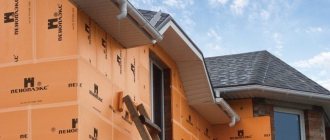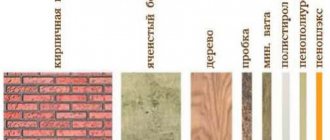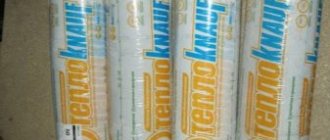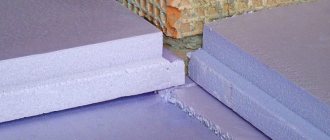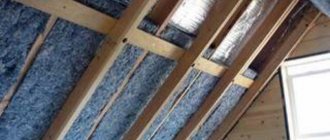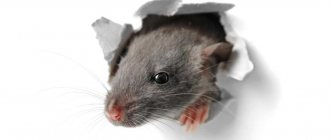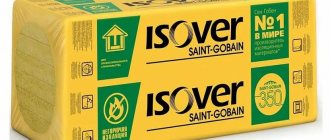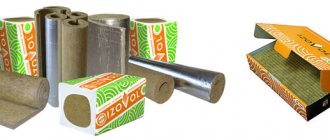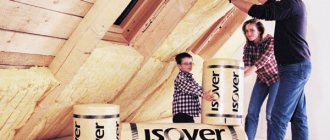Penoplex is a popular construction thermal insulator. It appeared on the market in the early 40s of the last century, it was developed by the American company Dow Chemical as a non-sinking material for watercraft. After World War II, its other properties were appreciated, including low heat conductivity. It began to be used in the construction of frame houses in the USA and Canada. It is made from a semi-finished product - polystyrene foam granules using the extrusion method. Penoplex is in demand due to its light weight, ease of installation and affordable price. But how environmentally friendly and fire-resistant is polystyrene foam?
How to produce
The first installation for the production of extruded polystyrene foam appeared in the USA more than half a century ago. In the manufacture of this material, special chemical foaming agents are used - blowing agents. The chamber of special equipment first becomes very hot. Then polystyrene granules are fed into it. After they melt, porophores are added to the mixture. As a result, polystyrene foams and increases significantly in volume.
The resulting mass, which has the appearance of whipped cream, is then fed into an even layer of a certain thickness onto a conveyor belt and cut into slabs of the required dimensions. For example, substances such as ground perlite, citric acid, and sodium bicarbonate can be used as blowing agents in the manufacture of expanded polystyrene.
This technology produces all types of such materials, including Penoplex, Extrol, Technoplex, etc. During the production of such materials, various ingredients can be added to them to change, for example, characteristics such as strength, density, flammability. "Penoplex", which includes such components, has the best technical and operational characteristics.
Is penoplex flammable or not?
Official manufacturers do not provide any information about absolute non-flammability. There is only mention of an independent study, according to which penoplex began to be classified as class G1. But there are no such records in official government documents. This is what causes controversy; some consumers are sure that the independent examination was interested in the result, so the statement that penoplex does not emit harmful substances is simply absurd. But based on the statements of both sides, we can conclude that opponents of the non-flammability of polystyrene are simply unfamiliar with the properties of the fire retardant. Of course, such substances will not be able to prevent fire, but will not allow the material to burn out. How to explain this? It's simple. Under the direct influence of a flame, penoplex will light up, but as soon as the fire stops affecting it, it immediately goes out. It is based on these characteristics that polystyrene foam is called non-flammable, since in itself it can cause a fire. If we evaluate the statements that penoplex emits no more harmful substances than wood, it looks controversial. Since extruded polystyrene foam is a synthetic material, in addition to carbon monoxide, it emits other chemical compounds that can cause pulmonary edema, severe poisoning and even suffocation in humans.
Material advantages
Consumers consider the advantages of Penoplex primarily to be a low degree of thermal conductivity. In terms of this indicator, such slabs are superior to even mineral wool, which is very popular, for example, among private developers. Another advantage of Penoplex is its light weight. It is very easy to transport such slabs. This material is distinguished by its ease of installation. It is attached to insulated surfaces using an adhesive of a special composition. In some cases, slabs of this material can additionally be attached to walls, partitions or, for example, ceilings using plastic mushroom dowels. This material is also easy to cut.
Another advantage of Penoplex, compared to the same mineral wool, is that it is not at all afraid of water. When moistened, this material does not lose its heat-preserving qualities and does not begin to collapse.
Another undoubted advantage of Penoplex is its ability to withstand significant loads. Dense slabs of this material are often used to insulate floors, for example, under screed. Such sheets cost a little more than mineral wool, but still their price is not too high.
Areas of application
From the above properties we can conclude that both expanded polystyrene and penoplex are very valuable building materials and have a number of invaluable properties. What properties can be mentioned in addition to those indicated?
- the lightness of both materials, in the sense of weight, and the ease of their processing, in the sense of simplicity;
- possibility of transportation, storage and processing (cutting, laying) without the use of protective equipment.
- compressive strength;
- breathability of expanded polystyrene;
- practical air impermeability
of penoplex
And here, finally, I come to the most important section, for the sake of which I started the article. I'll notice! For each application, I only consider penoplex and polystyrene foam. There may be better options for some applications. I admit this, but I consider only these two and no others. I would also like, with a preliminary apology, to insert a small watermark into the article and remind you that I always prepare articles for reprinting strictly individually, and if now you are reading this article not on the Belkin Labs dotka ru website, but on some other site, then this This means that the article was taken and used without my knowledge, that is, it was stolen. I ask you to read my articles on my website, namely on Belkin Labs dot ru. Of course, in Latin letters.
What material should be used for external insulation of the wall of a residential building?
What goals do we pursue when we build a house? Quite obvious. We need it to be comfortable in the house and so that the construction of this house does not cost us too much. That is, the pocket, of course, will suffer, but the main thing is that it does not die from too much beating. How can we achieve this? Obviously, you need to use progressive building materials and not invent anything too complicated and abstruse, since everything reliable and ingenious is always simple. Another very important point that is usually forgotten. To ensure the desired simplicity, we need to use for insulation exactly the material that is intended for this, and not the one that the market economy in general and the individual seller in particular advises us.
If you choose between expanded polystyrene and penoplex for external insulation of the wall of a residential building, it is expanded polystyrene
, not penoplex. Why? Yes, because it is more breathable and we don’t have to use expensive vapor barriers on the inside of the house. At the same time, we get a breathable wall, which is good, because it gives us additional comfort (at least it should) and we don’t use a vapor barrier, which is also good, because we save money and time on this, which, ultimately, is also money.
Important!
Both expanded polystyrene and penoplex allow plastering over a metal mesh. This makes it possible to save on external finishing, because plastering until recently was one of the cheapest options for external finishing.
Insulation of the facade on brick. One of the most common methods of external insulation in Germany (more than 200 million square meters are insulated in this way).
For external insulation of the wall of a non-residential building or roof?
You can use both. You can take the one that is cheaper, since in this case we don’t need anything other than thermal insulation from the material. It is difficult to use either material on uneven walls or roofs. This material requires very flat bases on which it is laid.
For a flat roof?
Either material will do. The key property here is extremely low moisture absorption and low thermal conductivity. To be honest, I think that a flat roof is generally a controversial idea, to put it mildly (I don’t use the word “idiotic” only because of my good upbringing, innate political correctness and tolerance acquired over the years), and the only convenient way to implement this idea is to lay a thick (10 centimeters) a layer of one or another polystyrene on a continuous layer of some waterproof glue, and then fill everything with a layer of bitumen 2 centimeters thick, no less, with a layer of roofing felt with significant overlaps.
For ceiling insulation?
You can use both materials. Penoplex is even better. If you lay it down carefully, you can avoid making any floor coverings in the attic and walk directly on the foam. If you use expanded polystyrene, then you should not cover it with anything, because moisture may collect under the covering material (or it may not, depending on the specific implementation). It's not fatal, but it's unpleasant.
To insulate the wall on the living room side?
Either none, due to the danger of shifting the dew point, which I have repeatedly mentioned, or penoplex, since its careful use will reduce the need for additional vapor barrier. Here the key property of the material is its air resistance.
permeability. Do not forget that both materials can be impregnated with fire retardants, which are toxic and “stink” in any condition, not necessarily only during a fire.
To insulate a balcony?
Definitely penoplex
. The reasons are the same as in the previous question.
For floor insulation?
Any. Both of them are great. The key properties are compressive strength, water resistance, good (in the sense of low) thermal conductivity. I believe that both materials are simply ideal for flooring. Cheap and harsh! We make a subfloor using joists. We use simple unedged boards in two layers diagonally. You just have to remember to debark. We attach polystyrene foam or penoplex to the boards. We pour a screed directly onto the slabs (2-3 centimeters). We put anything on the screed. Not gender, but a sight for sore eyes! Just to die for, how wonderful it is.
The use of polystyrene foam for floor insulation
To fill a frame wall?
Here I will answer evasively. I would not use the materials described in frame construction. And let me emphasize! Only one property of these materials played a role - their low, again in my experience, noise insulation. Imagine, you built a house, but in the end it turns out that you can hear everything that is happening outside. Cars are driving, roosters are crowing, birds are chirping, planes are flying, people are talking loudly at night... And you can’t hide! It's terrifying!!! But if there is no other choice, then I would use penoplex
.
Firstly, maybe it doesn’t transmit noise as well as polystyrene foam, and secondly, the air impermeability of polystyrene foam would play a role
.
For thermal insulation of foundations and plinths of buildings?
For this purpose, as well as for the foundation of runways, hockey rinks, ice arenas, sports fields, foundations for railways on especially heaving soils and for the construction of roads through swamps, penoplex
. For this purpose it is almost ideally suited and cannot be replaced by any other material. If someone inherits a swamp, the Grimpinskaya bog, then I will propose to build their family estate on a foundation made of polystyrene foam. True, the slabs should be about a meter thick in my opinion.
Disadvantages of the material
Among the disadvantages of Penoplex, among other things, consumers include a low degree of vapor conductivity. Therefore, it is not recommended to use such slabs for insulating, for example, wooden walls. Otherwise, fungus will form on their surface.
Also, expanded polystyrene, like mineral wool, is considered a material that is not very environmentally friendly. It is also not recommended to line baths with it, for example. At high temperatures, such stoves can begin to emit fumes of toxic styrene.
Another disadvantage of this material is that it does not have a very high degree of resistance to various types of chemicals. For example, this material should never come into contact with toluene.
Well, the main disadvantage of this material is, of course, flammability. “Penoplex” is capable, among other things, of igniting quite easily and quickly. It is for this reason that owners of country houses often refuse to use this material for their insulation, preferring to use mineral wool.
Prices
The table below shows the cost of insulation of various thicknesses.
| Brand | Penoplex thickness, mm | Cost, rubles | |||
| Plate | m2 | Package | m3 | ||
| 31 for interior work | 50 | 110 | 150 | 1480 | 4300 |
| 10 | 190 | 270 | 2700 | 7750 | |
| 31 C universal | 50 | 160 | 215 | 1290 | 4500 |
| 10 | 290 | 390 | 2350 | 8100 | |
| 35 basement | 50 | 170 | 230 | 1340 | 4650 |
| 100 | 300 | 420 | 2400 | 8370 | |
| 35 K roofing | 50 | 180 | 260 | 1470 | 5100 |
| 100 | 330 | 460 | 2700 | 9200 | |
| 45 improved | 50 | 480 | 310 | 3570 | 6200 |
| 100 | 800 | 560 | 6450 | 11500 |
The price of Penoplex packaging may differ significantly from that shown in the table, as it often depends on the volume of materials purchased. The size of each slab is 600 by 1200 mm.
Consumer Reviews
“We insulated our house with Penoplex back in the early 2000s. Since the size of the house was already small, we decided to mount it outside, under the plaster. To be honest, I thought it would crumble in a couple of years; the slab and the material from which it was made seemed too unconvincing. It turns out that it was in vain, almost 15 years have passed, the plaster has begun to fall off in some places, but the insulation is holding up well.”
Andrey, Kazan.
“Last year I decided to insulate the dacha. The budget is quite modest, so I counted every penny and spent a long time choosing between slabs and mineral wool. I searched the entire Internet, read reviews and opinions of experts. Everything spoke in favor of the slabs, although wool was cheaper. I decided that the miser pays twice. So far I’m completely happy with everything, in winter we even managed to save a little on heating.”
Vasily, Moscow.
“Our construction team switched to Penoplex insulation a long time ago. Since we have been working for many years, we have tried all sorts of materials. It’s especially uncomfortable to look your clients in the eye when you meet them a couple of years later, and they tell you that it’s as cold in their home as it is outside, and what can we do? As soon as we started working with these slabs, the problem immediately disappeared, now we don’t even bother with other insulation materials.”
Konstantin, St. Petersburg.
“About five years ago, my husband decided to convert the loggia into his office. We chose all the building materials together, and when it came to insulation, we decided to go with this brand. We bought the thinnest slabs, since there is already little space on the loggia, but it is still warm there, although there were no heating pipes installed there. Definitely, Penoplex is a good insulation material and we are completely satisfied with it. We recommend it to everyone."
Natalya, Moscow region.
“I never read reviews on the Internet and didn’t believe them, but then I decided to insulate the roof of the bathhouse, all the heat was leaking out into the street - you’d get tired of heating it. I started looking for suitable slabs. Some are more expensive than my bathhouse, others do not inspire confidence just by their appearance. In short, I decided to take Penoplex. The size was just right for the roof, I did everything myself, now it takes half as much wood to light the bathhouse. A great thing, in a word."
Anatoly Sergeev, Novosibirsk.
Classification by degree of flammability
Thus, one of the main disadvantages of Penoplex is flammability. The flammability groups of building materials are currently distinguished as follows:
- NG - do not ignite even when exposed to open fire;
- G1 - burns very weakly;
- G2 - moderately flammable;
- G3 - flammable;
- G4 - flammable.
“Penoplex”, depending on the brand, may belong to group G3 or even G4. When burned, this material emits very caustic, toxic smoke.
Some companies also claim that they produce Penoplex with G1 flammability. However, experienced builders believe that this material cannot be resistant to fire below G3.
Briefly about the main thing
Artificial materials always raise concerns in terms of their fire safety. The danger that a particular building material can pose is regulated by regulatory documents, and each building material is assigned certain characteristics: the degree of flammability, toxicity of combustion products, smoke-generating ability.
Initially, EPS had a maximum degree of flammability, but then they began to reduce it using fire retardant additives. Modified (self-extinguishing) insulation is allowed to be used in construction, provided that the installation rules are followed. But even in this case, the surface of the polymer melts under the influence of fire, and toxic substances enter the air.
Flammability degree of "Penoplex"
Thus, this insulation cannot be exposed to open fire, otherwise this material will ignite. In order to reduce the flammability of such slabs, during their manufacture, manufacturers add special additives to the granules. Due to the presence of such components in the composition of this material, Penoplex goes out immediately after ignition. However, in terms of fire safety, it is still to a certain extent inferior to mineral wool, which does not burn at all.
When using Penoplex as insulation, experienced builders advise installing the slabs in such a way that the possibility of their direct contact with fire is excluded. For example, it is not worth using such slabs to insulate walls near a stove.
Structures insulated with Penoplex can withstand exposure to open fire for, as practice shows, about 15 minutes. This time may be enough for the safe evacuation of people. Moreover, drops of melting thermal insulation boards of this type are not capable of setting fire even to paper. However, only material made using special fire-fighting additives behaves in this way. This is worth keeping in mind when choosing an insulator.
Is there fire retardant foam?
Since the raw materials from which the heat insulator is made burn well, ordinary polystyrene foam has a high flammability class - fourth. It ignites already at +210 degrees C, and immediately after ignition the temperature begins to rise rapidly, and reaches +1200 degrees C. Penoplex contains a lot of carbon dioxide, so combustion is accompanied by copious smoke. Monomers, blowing agent vapors and oxidation by-products are released into the atmosphere. There are several ways to reduce flammability:
- flame retardants are added to the composition, which envelop the structural units of the insulation;
- smoke-absorbing components are added to penoplex;
- They produce heat insulators using technologies different from conventional methods.
Combustion of extruded polystyrene foam
On a note! If you decide to buy non-flammable polystyrene foam, be prepared to pay more. Its cost increases by the price of additives or implementation of the technology. But as a result, you get a fireproof thermal insulator with high performance characteristics.
Classification by type
Currently, the industry produces several brands of Penoplex, differing in purpose. Eg:
- "Penoplex 31C" is used mainly for insulating pipes and containers;
- Grade 35 is universal and can be used for insulation of both pipes and walls of buildings, screeds, and foundations;
- "Penoplex 45" has a high density and can be used for insulation, for example, of airfield runways, highways and floors in industrial premises.
All these brands belong to materials with a fairly high degree of flammability. The flammability group of Penoplex can be either G3 (with additives) or G4, depending on the variety.
So, for example, the material intended for cladding walls usually has a higher degree of fire resistance than that used for cladding foundations. The flammability of Penoplex 35, for example, is such that it can be classified as class G3. Material 45 belongs to group G4.
There is also a brand called Penoplex Geo. The flammability of this material is also high and it belongs to group G4. Such sheets are used to insulate foundations. Sheets of this type are distinguished by an almost zero degree of moisture permeability and are resistant to biological influences.
Penoplex 35
Wholesale price from Price from 4300 rub.
Penoplex 35 is a type of thermal insulation material that belongs to the so-called new generation. The slabs are actively used during repair and construction work where builders are faced with the task of maximizing heat conservation.
! The difference between this material and similar options is that it contains a fire retardant - a substance that can increase the resistance of slabs to combustion.
Since the product is not at all afraid of moisture, it can be used in a variety of conditions, and installation will not take much time or effort.
Among the distinctive advantages it is worth noting:
- environmental friendliness;
- low flammability;
- low water absorption coefficient;
- strength;
- high sound insulation performance;
- excellent heat saving performance.
The material has a fairly low chemical resistance to polyester resins and coal tar, benzene, xylene and toluene, diethyl ether and methyl acetate-based solvents, oil paints and formaldehyde. But, at the same time, it perfectly resists the effects of organic and inorganic acids, bleach and salt solutions, cement and ammonia, alcohol dyes and even caustic alkalis.
During the manufacturing process of Penoplex insulation, an effective fire retardant with a high-tech patented additive is added to the feedstock, which significantly increases the resistance of the final product to combustion, due to which it is classified as fire-resistant. In the event of a fire, the material does not emit poisonous or toxic gases, and its combustion products are equivalent to those gases (CO and CO2 - carbon dioxide and carbon monoxide) that ordinary wood emits during combustion.
Specifications
Thus, Penoplex is a material with excellent thermal insulation properties, easy to use and relatively inexpensive. The technical characteristics of such plates differ in the following:
- service life - more than 50 years;
- operating operating temperature - in the range -50...+75 °C;
- degree of thermal conductivity - 0.030-0.032 (m*K);
- water absorption per day - 0.4%;
- density - 28-33 kg/m3;
- degree of vapor permeability - 0.007 mg/m*h*Pa.
This insulation can provide sound insulation of 41 dB. It has a compressive strength of 25-35 MPa. In terms of flammability, Penoplex, as already mentioned, belongs to group G3 or G4.
Do mice chew penoplex?
Penoplex has no nutritional value for mice
The common misconception that foam is the favorite food of rodents is incorrect. Penoplex does not contain biologically active substances, therefore it cannot be of nutritional value for rodents, but they are able to gnaw through thermal insulation, making nests, looking for water and food. In order to protect against rodents, the heat insulation slabs are covered with a metal mesh. If the mice have grown excessively, deratization will be required.
Since penoplex is biologically neutral, it is not of interest to harmful insects, is not susceptible to infection by mold, does not rot, and does not decompose.
Dimensions
The thickness of this material may vary. Penoplex is on sale today from 20 to 100 mm. 20 mm material is usually used for insulating partitions indoors. The thickest “Penoplex” can be used for cladding facades, floors, and in some cases walls. The width of the slabs of this material is always 600 mm. The length of the sheets can be 1200 mm or 2400 mm.
When purchasing such slabs, among other things, you should pay attention to their integrity. “Penoplex” is a material, of course, not as fragile as polystyrene foam. However, sometimes such slabs can break. It is for this reason that experts advise always purchasing this material with a reserve of at least 5-10%.
We study the flammability of extruded polystyrene foam
When choosing a material to insulate a house, people are guided by different principles. For some, price is important, for others - ease of operation, while others pay close attention to parameters such as environmental friendliness and fire safety. What can you tell us about extruded polystyrene foam in this regard – is it low-flammable or does it pose a fire hazard? You can find many different opinions about the flammability of extruded polystyrene foam, and sometimes they are even opposite. Let's try to figure out what's going on here.
Where can it be used
The characteristics of Penoplex in terms of flammability, degree of thermal conductivity, and strength determine, of course, among other things, the scope of its use. In most cases, this material, like other brands of extruded polystyrene foam, is used to insulate the facades of residential buildings. This material is very good, for example, for insulating brick and concrete walls from the cold. It can also be used, subject to certain technologies, for cladding facades made of foam concrete.
In addition to walls, this material can be used, for example, for cladding and insulating roofs. With its use, slopes are isolated if you want to equip a residential attic. This material is especially often used for insulating roofs on solid sheathing.
Penoplex can also be used to insulate foundations. In this case, it is considered a much more suitable type of insulator than mineral wool. Unlike the latter, extruded polystyrene foam is not at all afraid of moisture, including soil.
Penoplex is also considered very suitable for floor insulation. Such slabs can be used both for insulating floors along joists and under a concrete screed. Of course, ceilings are also sheathed with such sheets.
Very often this material is used for cladding balconies and loggias when it is necessary to insulate them. In this case, 50 mm Penoplex slabs are most often used.
Buildings for almost any purpose can be sheathed with this material. But since Penoplex has a high flammability class, it is not recommended to use it, for example, for insulating baths or saunas. This material is also not used for insulation of heating mains.
Penoplex 35 material characteristics
Thanks to the special properties of the insulation, as well as the wide range of models, you can choose the right material for any purpose. Despite its low weight, the insulation has a fairly long service life, although its main advantages are increased strength and ease of installation.
Note! If necessary, penoplex can be cut using a regular knife. And due to its unique characteristics, the material has gained immense popularity in a number of countries; Moreover, modern experts classify it as a new generation of insulating materials
Also, as noted above, penoplex is suitable for almost all buildings. Thermal insulation boards made from it differ primarily in:
- non-toxic, safe for the human body;
- lack of hygroscopicity (this means that, if necessary, the slabs can easily be left in the open air in the package);
- biological resistance (bacteria do not multiply in it);
- resistance to various atmospheric phenomena and temperature changes (the insulation can withstand both low and high temperatures).
Despite the fact that penoplex 35 is characterized by increased resistance to chemical attack, as well as to the influence of lime, bitumen and cement, materials that can destroy its structure still exist; as a result, the technical parameters of insulation boards can change dramatically.
For example, contact with acetone can render insulation unusable, as well as with certain solvents and other organic substances. By the way, penoplex is produced from polystyrene foam (another name is polystyrene foam) using extrusion technology.
Excellent heat-saving properties are provided by special sealed air capsules formed during the production process. And the thermal conductivity of air, as is known, is the lowest among all materials known to man - about 0.25 watts/micron. For penoplex, for comparison, this is a record 28 watts/micron, which is why, in fact, the material is so in demand among consumers. Moreover, due to the density and small thickness, the installation procedure is simplified, since the slabs can even be secured using glue (the type of the latter depends on the specific region in which the insulation is being carried out).
Adhesive for penoplex
Previously, we talked about how to choose and correctly use foam glue; in addition to this article, we advise you to read this information and read about it here
Installation technology without frame
We found out what flammability class “Penoplex” has (35, 31, 45, “Geo”), as well as what technical characteristics this material has. But how to properly install slabs of this type? When installing Penoplex, as already mentioned, special glue is used. This product is usually applied to sheets along the perimeter and diagonally. The insulated surface itself is first cleaned of dirt and dust.
The slabs are glued in a checkerboard pattern. Sometimes Penoplex is installed on facades in two layers. This technology is usually used in cold regions. When installing the slabs of the top layer when using it, make sure that they overlap the joints of the bottom one.
After the surface is completely finished with slabs, they begin to putty the joints. For this purpose, a special type of sealant is used. Next, a special reinforcing mesh is mounted on the polystyrene foam surface. Then, plaster is applied on top of it. At the final stage, the walls are painted.
Method of obtaining
The websites of supplier companies often contain similar names: expanded polystyrene (sometimes extruded), polystyrene foam, penoplex, polyurethane foam and some others.
It is useful to understand what is at stake in each case. Foams are a class of polymers (plastics) that contain air cells between the chains of an organic matrix. If the microcavities are connected to each other, the product is called a foam plastic.
Foams are produced by mixing large polymer molecules or medium oligomer molecules with solid blowing agents, low-boiling liquids or an inert gas.
There are technologies in which gas is formed during a chemical reaction of organic raw materials. The foamed product is shaped by cooling or special curing techniques.
Expanded polystyrene is the result of foaming a suspension of styrene with pentane or isopentane. The primary product is in the form of granules. After heating, the granular particles foam and then sinter.
There is a modification of expanded polystyrene obtained by polymerization of the monomer. The resulting polymer is mixed with additives that form pores. The resulting mixture is passed through an extruder.
The result is a high-density foamed styrene polymer. Extruded polystyrene foam, often called penoplex. This is a product with good thermal insulation ability. It can be used to insulate houses even in the Far North.
Among foam products, polyurethane foam, also known as foam rubber, is very popular. It is obtained by foaming a liquid reaction mixture of monomers with the addition of organosilicon components, foaming agents (water or freon), and substances with high surface activity.
By varying the process conditions, polymers of varying rigidity can be obtained. They have conditionally non-flammable properties. Foamed polyurethane products with a reinforced matrix are used as insulation materials.
Frame installation
In this case, Penoplex is installed using the same technology as mineral wool. This technique is used when they do not want to plaster the facades, but cover them, for example, with siding, clapboard or corrugated sheets.
In this case, the lathing is first installed on the walls. Next, the Penoplex slabs themselves are installed between its elements. On top of them, a waterproofing film is attached to the bars to the frame. Then the finishing material itself is installed - siding, lining, etc.
Is penoplex harmful to health?
To determine whether penoplex is harmful or not, you should familiarize yourself with the production technology. The extrusion method allows you to destroy harmful elements that make up the material during remelting. The result is insulation that is used indoors without causing harm to the owner. Additional processing of the slabs makes it possible to eliminate secretions that negatively affect human well-being. Professionals say that low vapor permeability has a negative impact on the indoor atmosphere, as it can lead to condensation and, therefore, increase the risk of mold and mildew. This characteristic is inherent in all polymer insulation materials, so in this aspect the harm is insignificant.
